The step is really necessary
Managing and operating a crypto-asset exchange is one of the important issues for the development of the digital financial market. Recently, the issue of piloting a centralized crypto-asset exchange in Vietnam has become a "hot" topic, attracting the attention of agencies, departments, sectors, Vietnamese leaders and press agencies.
According to Directive No. 05/CT-TTg dated March 1, 2025 on key tasks and solutions to promote economic growth, the Prime Minister requested the Ministry of Finance to take the lead in developing a legal framework to promote the healthy and effective development of digital assets and digital currencies in March 2025. The Resolution on piloting a centralized crypto-asset trading floor is expected to be issued on April 1.
At the seminar "Sharing experiences in centralized crypto asset management" on March 27 in Hanoi , Mr. Tran Huyen Dinh - Chairman of the Fintech Application Committee, Vietnam Blockchain Association (VBA) said that piloting a centralized crypto asset exchange in Vietnam is a really necessary step.
Currently, crypto assets are considered a very large market, with a trading volume of up to 200 billion USD per day, with 617 million users, accounting for about 8% of the global population.
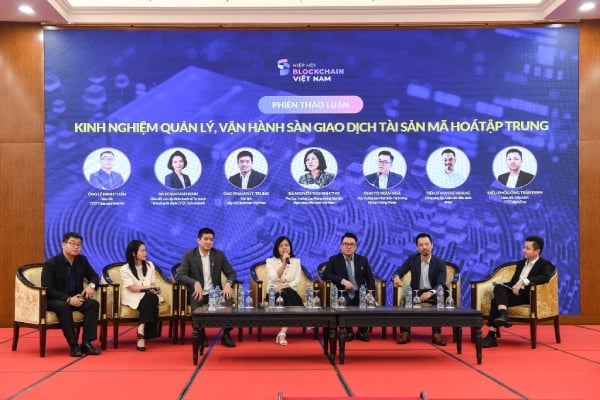
Of which, Vietnam has about 17 million people owning crypto assets, ranking 7th in the world . Notably, Vietnam has been in the top 5 of Chainalysis' global digital asset adoption index for the past 4 years, including 2 years holding the leading position.
Up to this point in the world, no country has adequate policies to manage this centralized crypto exchange because it is on the blockchain network and basically runs across borders.
Mr. To Tran Hoa - Deputy Head of Market Development Department, State Securities Commission said that the draft Resolution on piloting the centralized crypto-asset trading floor was built based on research from crypto-asset markets that are considered advanced in the world such as the US, Europe, Japan, UAE, Thailand and complies with the system of common international regulations on finance and technology.
In particular, exchanges need to self-evaluate and select valuable, highly liquid assets to ensure the interests of investors.
Mr. Phan Duc Trung - Chairman of the Vietnam Blockchain Association said that promoting the pilot implementation of a crypto asset trading floor at the same time as promoting the Law on Digital Technology Industry, expected to be passed in May 2025, demonstrates the Government's strong determination in building a legal framework in the field of digital assets.
“Legalizing decentralized finance helps ensure the legality of crypto assets, while promoting global technological innovation and integration, helping Vietnam optimize resources from the vibrant growing crypto market and fulfill the government's commitment to anti-money laundering,” Mr. Trung emphasized.
Exchanges still operate in a legal gray area
Assessing the current status of centralized exchanges in the Vietnamese market, Mr. Tran Huyen Dinh - Chairman of the Fintech Application Committee, Vietnam Blockchain Association (VBA) said that currently the Vietnamese market has about 20 centralized exchanges.
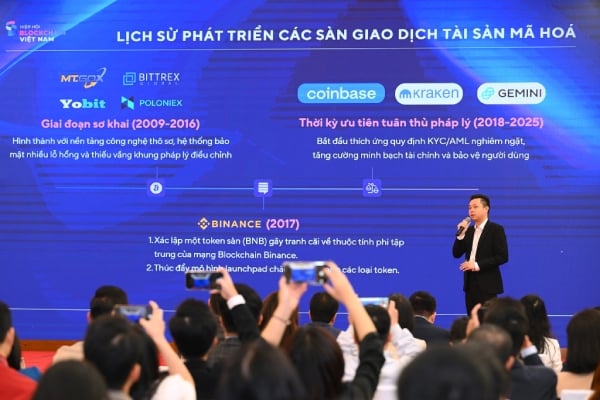
These exchanges are gathered through communities including both online and offline. There are groups with up to several hundred thousand registered users to be able to share their applications and exchanges to attract users. The trading volume of international exchanges in the Vietnamese market is considered very large.
According to Mr. Dinh, the exchanges are still operating in a legal "gray zone". Most of the exchanges do not have legal status or headquarters in Vietnam. If they do, they are mostly technology companies that process technology products for exchanges in the Vietnamese market. The exchanges do not have a monitoring system and do not comply with anti-money laundering (AML) and counter-terrorism financing (CTF) regulations.
"In particular, exchanges do not cooperate with authorities. This leads to an increase in scams related to crypto assets.
When there were signs of fraud, we contacted the exchanges to continue tracing, but the exchanges refused to cooperate. Even when there were reports from the police, the exchanges refused to cooperate to continue tracing," Mr. Dinh said.
In this context, Mr. Dinh suggests three approaches to the Vietnamese market.
Firstly, we will seek to more strictly manage centralized crypto-asset exchanges. That is, we will build regulations for centralized exchanges to control cash flow as well as taxes and risks to protect Vietnamese users in the Vietnamese market.
Second, balance between economic benefits and technological innovation. In fact, many countries have sought to come up with appropriate policies between technological innovation and balancing national interests.
For example, Thailand focuses on promoting technological innovation along with tourism development; promoting crypto-asset policies in line with tourism policies. In October this year, Thailand began allowing sandbox testing in crypto-asset payments in Phuket - one of the extremely popular tourist destinations.
At the workshop, experts said that technology is not enough to operate a successful and sustainable centralized crypto asset exchange. It is necessary to enhance security and internal risk management to avoid incidents that cause loss of investor confidence. Ensure market depth, fast order matching speed and diverse liquidity connections to support effective trading.
Improving the interface, optimizing the transaction process, enhancing the quality of support and enhancing user education are also essential. Meeting KYC/AML regulations, cooperating with regulatory agencies and building an operational strategy in line with the legal framework are also important considerations...
Source: https://doanhnghiepvn.vn/chuyen-doi-so/kinh-te-so/hon-20-san-giao-dich-tai-san-ma-hoa-dang-hoat-dong-ngoai-phap-luat/20250327070313371


![[Photo] President Luong Cuong presents the 40-year Party membership badge to Chief of the Office of the President Le Khanh Hai](https://vphoto.vietnam.vn/thumb/1200x675/vietnam/resource/IMAGE/2025/5/19/a22bc55dd7bf4a2ab7e3958d32282c15)
![[Photo] Close-up of Tang Long Bridge, Thu Duc City after repairing rutting](https://vphoto.vietnam.vn/thumb/1200x675/vietnam/resource/IMAGE/2025/5/19/086736d9d11f43198f5bd8d78df9bd41)


![[Photo] General Secretary To Lam attends the conference to review 10 years of implementing Directive No. 05 of the Politburo and evaluate the results of implementing Regulation No. 09 of the Central Public Security Party Committee.](https://vphoto.vietnam.vn/thumb/1200x675/vietnam/resource/IMAGE/2025/5/19/2f44458c655a4403acd7929dbbfa5039)
![[Photo] Panorama of the Opening Ceremony of the 43rd Nhan Dan Newspaper National Table Tennis Championship](https://vphoto.vietnam.vn/thumb/1200x675/vietnam/resource/IMAGE/2025/5/19/5e22950340b941309280448198bcf1d9)







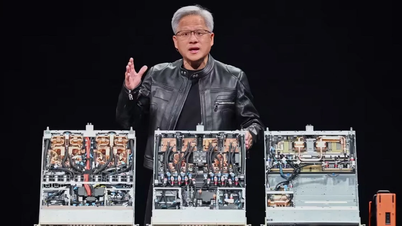





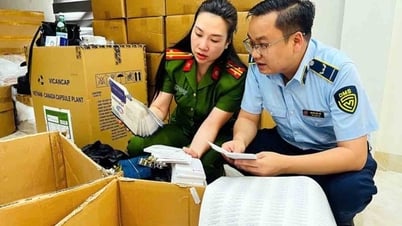





![[Photo] Prime Minister Pham Minh Chinh inspects the progress of the National Exhibition and Fair Center project](https://vphoto.vietnam.vn/thumb/1200x675/vietnam/resource/IMAGE/2025/5/19/35189ac8807140d897ad2b7d2583fbae)

















































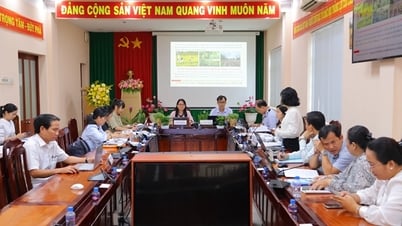
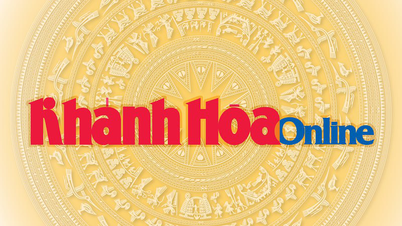





![[VIDEO] - Enhancing the value of Quang Nam OCOP products through trade connections](https://vphoto.vietnam.vn/thumb/402x226/vietnam/resource/IMAGE/2025/5/17/5be5b5fff1f14914986fad159097a677)





Comment (0)